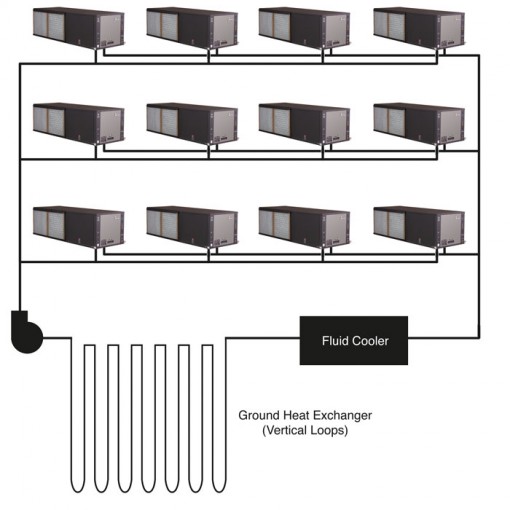Hybrid Geothermal Heat Pump Applications
Hybrid designs blend the use of geothermal resources and conventional heat rejectors to provide a highly efficient and cost-effective system. They take advantage of the fact that building heating and cooling loads are generally not balanced, with cooling being dominant in most cases due to internal gains. Rather than upsize the ground heat exchanger to meet
the higher cooling load, it is sized to meet the heating load and a heat rejector is added to
the system.

Hybrid systems still eliminate the boiler and the use of fossil fuels, while at the same time reducing the land area and first costs required to install the ground heat exchanger. The reduction in ground heat exchanger size can be more than what the difference in loads might imply. When annual loads are imbalanced in systems with dense ground heat exchanger arrays, there are long term thermal buildup effects. Geothermal design algorithms compensate for this by increasing the ground heat exchanger size. A properly engineered hybrid system can remove both the difference in loads and the long term effects from the ground heat exchanger sizing calculation.
When water-loop heat pump systems were introduced into the marketplace, most engineering guides recommended the addition of thermal storage to the water loop.
Decades of low energy costs gradually diminished the use of added storage. The ground heat exchanger of a hybrid system provides the benefits of a massive thermal storage capacity in addition to a source of renewable energy. This provides more favorable loop water temperatures to the zone heat pumps, further improving system efficiencies.
ClimateMaster, Inc.
7300 SW 44th St
Oklahoma City, OK 73179
800.299.9747
Learn more about other Climate Control Group companies
CCG | ClimaCool | ClimateCraft | IEC
© ClimateMaster, Inc. All rights reserved 2024


